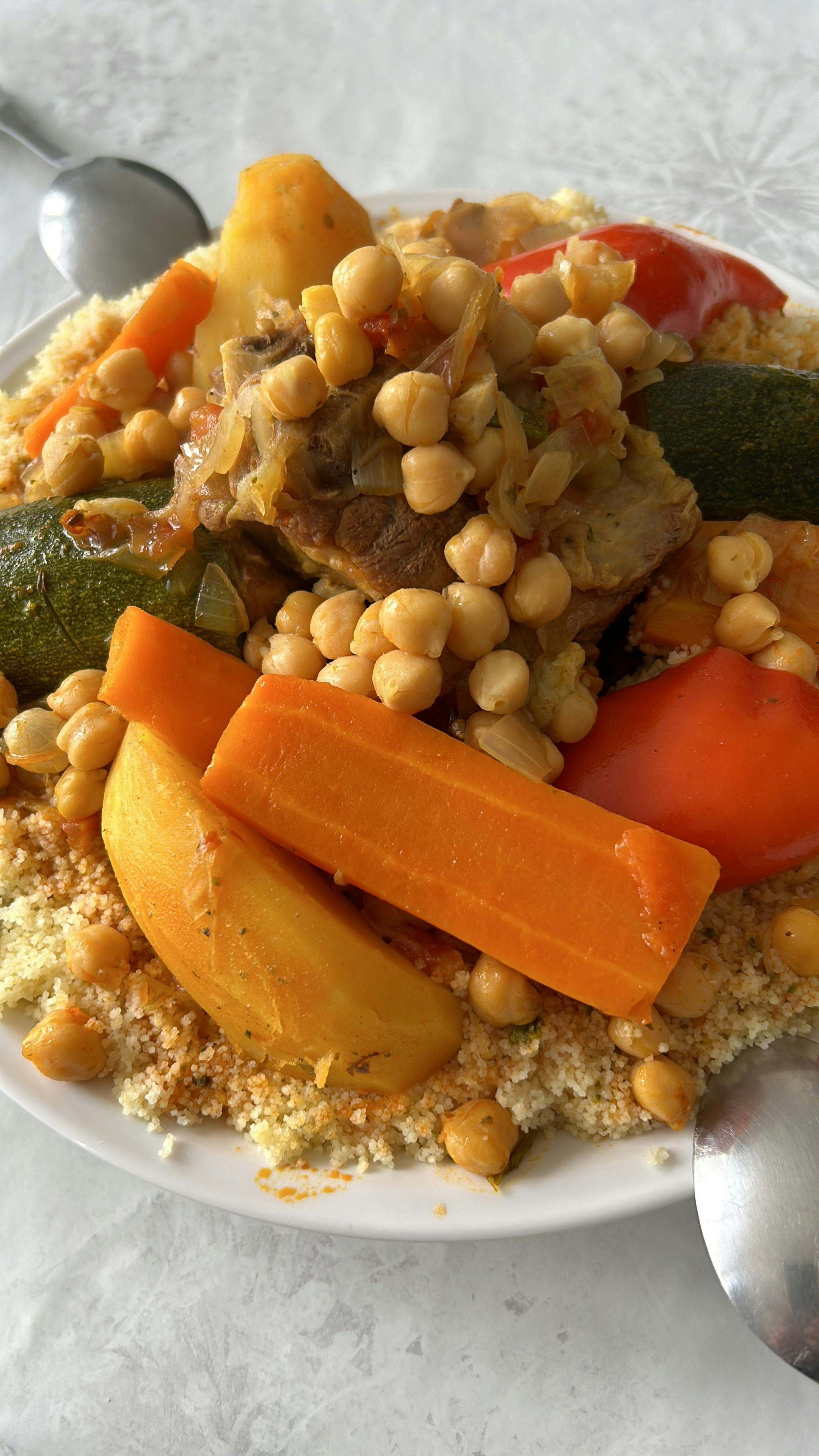
Apply Now


Effective Ways to Succeed on a Lactose-Free Diet in 2025
The rise in dietary restrictions and food sensitivities has led to an increasing need for individuals to adapt their eating habits, especially regarding lactose intolerance. According to recent studies, a significant portion of the global population experiences lactose intolerance, which can lead to digestive issues when consuming dairy products. Thus, understanding how to maintain a healthy and balanced lactose-free diet is essential for managing its effects. Benefits of adhering to a lactose-free diet include improved digestive health, increased energy levels, and enhanced nutritional balance. Not only does it mitigate uncomfortable symptoms associated with lactose intolerance, but it also opens the door to a myriad of delicious lactose-free foods. This article will delve into effective ways to succeed on a lactose-free diet, exploring the best lactose-free brands, meal planning strategies, and alternative products that cater to this dietary need. Key takeaways include tips for incorporating lactose-free snacks into your daily routine, understanding lactose-free meal ideas for different occasions, and creative lactose-free recipes to invigorate your kitchen skills. By the end of this article, you will have a comprehensive guide to thriving on a lactose-free diet and adapting to your dietary needs with confidence.Understanding Lactose Intolerance and Its Impact
To embark on a successful lactose-free diet, it's crucial to first grasp the concept of lactose intolerance. This condition arises from the body's inability to effectively digest lactose, a sugar found in dairy products. When individuals with lactose intolerance consume dairy, they may experience symptoms such as bloating, gas, diarrhea, and abdominal pain. Recognizing these signs can help one make necessary dietary adjustments. Moreover, understanding the nutritional implications of lactose intolerance is vital. Many lactose-free foods are fortified with essential vitamins and minerals to make up for what is often lost when avoiding dairy. This includes calcium, vitamin D, and protein, which are typically abundant in regular dairy options. Therefore, seeking out lactose-free alternatives that offer these key nutrients is crucial in maintaining a well-rounded diet. This naturally leads us to the advantages of a lactose-free lifestyle. Beyond alleviating digestive discomfort, many individuals find that removing dairy from their diets can lead to other health benefits, such as improved skin health, better mood stability, and even weight management. The key is to ensure your diet remains diverse and full of nutrient-rich foods.Benefits of a Lactose-Free Diet
A lactose-free diet not only addresses the discomfort associated with lactose intolerance but also offers several additional health benefits. Improved digestive health, for instance, is one of the most significant advantages. By eliminating lactose, individuals may experience a reduction in bloating, gas, and cramps, contributing to overall gut health. Another essential benefit of a lactose-free diet is the availability of alternative food options that promote a balanced nutritional intake. Lactose-free products, from lactose-free milk to cheeses and yogurts, are becoming increasingly popular, allowing individuals to enjoy favorite foods without the discomfort. Many of these products also leverage alternative dairy sources like almond, soy, or coconut, which provide unique flavors and textures. Cooking lactose-free presents opportunities to explore new culinary practices. With the right substitutes, individuals can create delicious meals that cater to their dietary restrictions. An introduction to lactose-free cooking can also expand your palate, encouraging the use of various herbs, spices, and vegetables.Lactose-Free Foods and Nutritional Balance
Building a lactose-free diet means understanding which foods fit within your meal plan and how to substitute traditional dairy items. A wide array of lactose-free foods such as lactose-free yogurt, cheese, and milk alternatives are available in stores today. These products often contain added nutrients that cater to those avoiding dairy, ensuring you don’t miss out on vital vitamins and minerals. Moreover, incorporating a variety of grains, proteins, and vegetables into your meals is crucial. Whole grains like quinoa, rice, and oats serve as excellent bases for grain bowls or salads. When paired with lactose-free snacks such as hummus, nuts, or fruits, they create a satisfying and nutritious option for your day. Selecting lactose-free protein sources—such as meat, eggs, and certain legumes—will also help ensure you meet your daily intake without resorting to dairy-based proteins. Hence, while there may be challenges in avoiding lactose, the options are abundant, and carefully planning meals can lead to a fulfilling dietary experience.Creating a Personalized Lactose-Free Meal Plan
With the foundational understanding of a lactose-free diet in place, the next step is creating a personalized meal plan that aligns with your lifestyle and nutritional needs. Establishing a meal plan can seem daunting, but the process can be simplified by focusing on core meals and snacks. A practical approach would include a selection of breakfast, lunch, dinner, and snack ideas that utilize lactose-free foods effectively. For example, a typical day might start with a smoothie made from lactose-free yogurt blended with fruits, followed by a quinoa salad for lunch topped with grilled chicken and lactose-free dressing. For dinner, you might enjoy a hearty stir-fry with an assortment of colorful vegetables and tofu or chicken served over brown rice. Finally, snacks could consist of trail mix with lactose-free cheese cubes or fresh fruit. This structure not only balances your meals but also ensures variety, reducing boredom while eating. Planning ahead involves exploring the best lactose-free brands and incorporating them into your recipes. Whether it’s finding delicious lactose-free dessert recipes or understanding which brands offer the best lactose-free beverages, familiarizing yourself with available options can streamline grocery shopping.Lactose-Free Cooking Tips
Success in the kitchen with a lactose-free *cooking* approach depends on mastering a few core techniques and tips. First, equip your kitchen with essential lactose-free substitutes for common dairy products—coconut milk, almond milk, and cashew cream, for example, can substitute for milk, while nutritional yeast can add a cheesy flavor without the lactose. Additionally, it’s wise to explore various lactose-free cheeses, creams, and yogurt. Brands today are focused on providing products that closely resemble their dairy counterparts, both in taste and texture, allowing you to enjoy your favorite recipes without compromise. Understanding food labels is another critical skill to develop. Always check ingredient lists to ensure no hidden lactose is present, and familiarize yourself with terms that may indicate dairy components. By becoming adept at reading labels, you can confidently navigate grocery aisles. Utilizing online resources for lactose-free recipes leads to discovering new culinary inspirations. Websites and cooking classes dedicated to lactose-free diets offer delish dishes that can align with any dietary tastes or preferences, ensuring your meals are always exciting and enjoyable.Exploring Lactose-Free Snacks and Meal Ideas
Snacking is often a challenge for individuals on a lactose-free diet, particularly for parents looking for lactose-free snacks for kids. However, countless delicious options are available that are easy to incorporate into daily life. Consider designing a snack rotation that includes items such as rice cakes with almond butter, vegetable sticks paired with hummus, and fresh fruit salads. Each snack can be nutritionally rich while being completely lactose-free. For kids, involving them in snack preparation can increase their interest in healthy eating while educating them about their dietary needs. Beyond snacks, meal ideas such as lactose-free breakfast options are plentiful. Smoothies, overnight oats, or gluten-free pancakes enriched with lactose-free yogurt can start your day on the right foot. There are also exciting possibilities for lactose-free dinners. Creative uses of available lactose-free products in cooking open doors to many flavors—from delicious tacos with lactose-free sour cream to pasta dishes made with dairy alternatives. Through personalizing your snack and meal ideas to fit your taste and nutritional requirements, you can maintain your excitement about food, ultimately leading to a more sustainable lactose-free lifestyle.Maintaining a Lactose-Free Lifestyle
Transitioning to a lactose-free lifestyle can present challenges, but with the right strategies, it becomes manageable and enjoyable. Understanding the dietary restrictions associated with lactose intolerance helps in planning social activities and outings. Knowing which restaurants offer lactose-free options or are understanding about dietary needs is crucial for an enjoyable experience. When traveling, it may be helpful to research local cuisines to identify which dishes are naturally lactose-free or can be modified accordingly. Also, keeping lactose-free snacks on hand while on the go will help avoid unnecessary cravings or discomfort. For families, instilling a lactose-free living approach that everyone can enjoy can foster community and support. Sharing meal ideas and recipes with friends or engaging in cooking classes together can enhance the experience. Lastly, community support plays a significant role in maintaining adherence to a lactose-free diet. Online forums and local meet-ups offer resources and encouragement that can keep you motivated on your journey.Conclusion and Key Takeaways
As we reflect on the effective ways to succeed on a lactose-free diet, it’s essential to grasp the basics of lactose intolerance and leverage available resources to ensure a balanced nutritional approach. By understanding how to create diverse meal plans filled with lactose-free foods, utilizing proper cooking techniques, and maintaining a supportive community, anyone can enjoy a fulfilling lactose-free lifestyle. With new products continually entering the market and an ever-expanding array of delicious recipes, thriving on a lactose-free diet is more achievable than ever before. Incorporating these strategies ensures that your journey toward a lactose-free lifestyle is enjoyable and sustainable, fostering better digestive health and a happier, healthier you.
